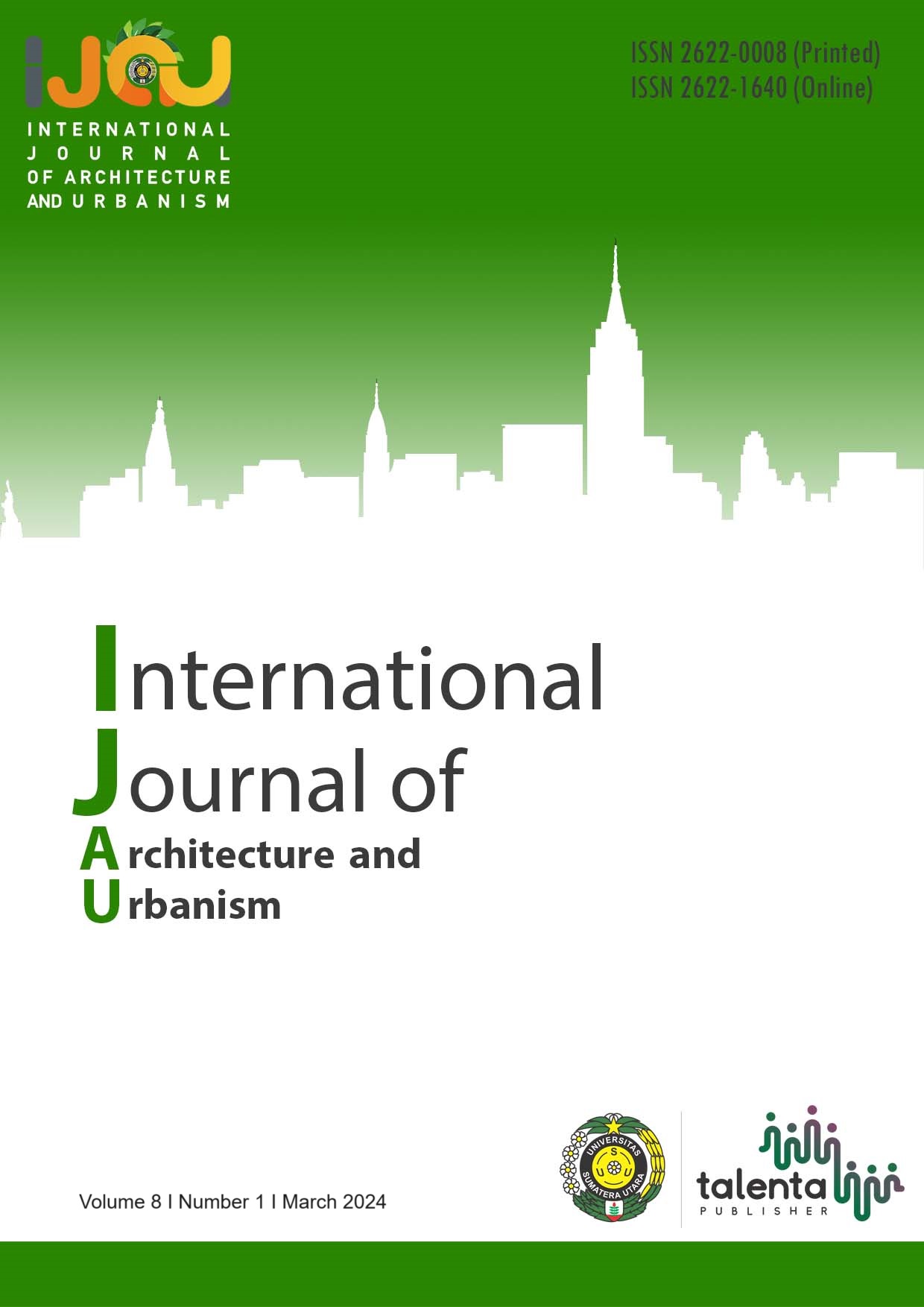Study of Futuristic Architectural Forms Towards the Function of Convention Buildings (Case Study: Indonesia Convention Exhibition (ICE), BSD)
DOI:
https://doi.org/10.32734/ijau.v8i1.15411Keywords:
Convention, Form, Function, Futuristic ArchitectureAbstract
According to the 'Encyclopedia of 20th Century Architecture', the form of a building must be derived from the fulfillment of the function it serves [1]. The form obtained can also be one aspect of the characteristics of an architectural style, such as in Futuristic Architecture. This research takes a case study of the Indonesia Convention Exhibition (ICE) building, BSD. Based on theoretical studies in various literatures, the characteristics of the Futuristic Architecture form are formulated, which are (1) dynamic form, (2) varying dimensions, (3) colors and textures are more striking but still simple, (4) shape and orientation can be interpreted differently from various positions, and (5) unstable visual inertia. The research used the descriptive-qualitative method, which describes the form of Futuristic Architecture found in the case study based on these five characteristics. Based on the analysis, it found that the ICE BSD building is suitable for the characteristic of the Futuristic Architecture form that affects the function of the convention building, and it can concluded that the Futuristic Architecture form has suitability in form, dimensions, color, texture, and visual inertia aspect, and unsuitability in position and orientation aspect.
Downloads
Downloads
Published
How to Cite
Issue
Section
License
Copyright (c) 2024 International Journal of Architecture and Urbanism

This work is licensed under a Creative Commons Attribution-ShareAlike 4.0 International License.


.png)










